 After the feasting season (Halloween to Christmas) comes the New Year, and for a lot of people this means a resolution. Most people make resolutions to start weight loss, work out more, eat better, and so on; but typically it is some sort of goal to start off the New Year on a healthier note. If you are hoping to have a healthier year, I have some suggestions that will help jump-start your January.
After the feasting season (Halloween to Christmas) comes the New Year, and for a lot of people this means a resolution. Most people make resolutions to start weight loss, work out more, eat better, and so on; but typically it is some sort of goal to start off the New Year on a healthier note. If you are hoping to have a healthier year, I have some suggestions that will help jump-start your January.
Keep Food Logs
The best and easiest thing you can do to help with changes in your diet is to start keeping track of what you are eating. It has been well researched that just writing down what you are eating helps you be more accountable to yourself, eat less, and create a more balanced diet with better nutrition.
Technology has made it much easier to keep track of what you eat. Using popular apps such as MyFitnessPal and LoseIt allows you to log millions of food choices, track your calories and macronutrients (carbohydrates, protein, and fat), and easily see where you are getting too much or not enough of the foods your body needs. But if these apps aren’t appealing to you, just jot down on paper what you had. That act of accountability alone has been found to help individuals eat 40 percent less!
Clean Out Your Fridge and Pantry
If you have a goal to eat more balanced in the new year, the first place to look to achieve this goal is your kitchen. Open your fridge, freezer, and pantry and start tossing! If items are expired, throw those in the trash so you can start with fresh foods for the year.
Next, take a look at the foods with really long ingredient lists. If you don’t know what is in your food or if you can’t pronounce it, this is typically a sign that the food is highly processed and high in preservatives and other additives. Swap these out for more fresh items or foods that have short and familiar ingredients.
Finally, stock your fridge and freezer with fresh fruits, vegetables, lean meats, low-fat dairy, whole grains, and healthy fats.
Hit Up the Grocery Store or Sign Up for Meal Delivery
Chances are you finished out the previous year eating a lot of meals away from home or not being able to control your choices at parties and gatherings. Make a goal this year to spend more time in your kitchen. This means going to the grocery store once per week to have the foods available to prepare balanced meals and snacks. Or, consider signing up for a meal delivery service such as Hello Fresh or Blue Apron to take the guesswork out of three meals per week. Check out my previous blog with my review of Hello Fresh.
Try Something New
Are you in a food rut? Are you bored with the same meals over and over again? Make an effort to get out of that rut by trying something new each week. This might be starting your day with veggie-filled egg muffins instead of your typical bowl of cereal. Or instead of running out at lunch to grab a sandwich, you start packing your lunch and include a turkey and avocado wrap with fresh-cut veggies and a Greek yogurt. Then at dinner, instead of corn and green beans as your go-to veggie, try something new like Brussels sprouts or asparagus. Make a list of new foods or food goals you want to achieve each week and enjoy new food experiences.
If you have been wanting to change some of your habits, take the New Year as an opportunity to start some fresh ones. It just takes one or two small changes to help jump-start your healthy eating.
This blog was written by Angie Mitchell, RD, Wellness Coordinator. To find out more about the NIFS bloggers, click here.


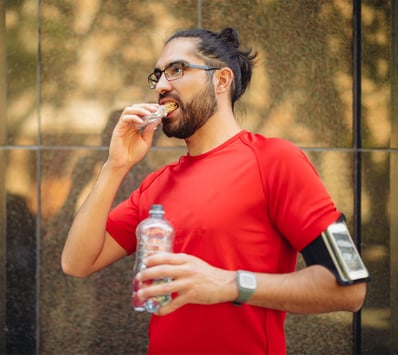 Your body needs fuel! When you are planning to do a run or a workout that is longer than an hour, the way to ensure that you have enough energy to get through it is to make sure you are eating the proper combination of foods beforehand for endurance. This is tricky, though, because you want to make sure what you are eating doesn’t upset your stomach during the workout. Here are some suggestions to get you through the workout with the right nutrition for feeling great.
Your body needs fuel! When you are planning to do a run or a workout that is longer than an hour, the way to ensure that you have enough energy to get through it is to make sure you are eating the proper combination of foods beforehand for endurance. This is tricky, though, because you want to make sure what you are eating doesn’t upset your stomach during the workout. Here are some suggestions to get you through the workout with the right nutrition for feeling great. We’ve all heard the phrase that an apple a day keeps the doctor away, but who knew that eating a balanced diet would also make you more productive at work? That’s what was found in a
We’ve all heard the phrase that an apple a day keeps the doctor away, but who knew that eating a balanced diet would also make you more productive at work? That’s what was found in a 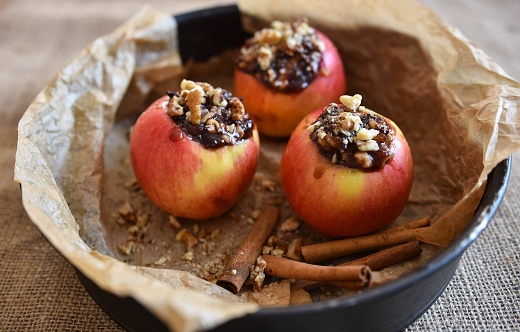 This is definitely my favorite time of year: football, cooler weather, and the return of all things apple and pumpkin. Not only are they chock-full of vitamins and other healthy goodness, but they are also delicious!
This is definitely my favorite time of year: football, cooler weather, and the return of all things apple and pumpkin. Not only are they chock-full of vitamins and other healthy goodness, but they are also delicious!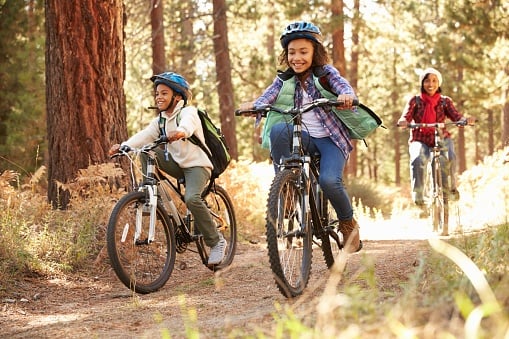 In Indiana, we experience all four seasons (sometimes all in the same day!). Your outdoor training and exercise regimen can be effected significantly by the season. While summer can be a fun, exciting time, exercising outdoors can be daunting and somewhat risky. While making sure you have
In Indiana, we experience all four seasons (sometimes all in the same day!). Your outdoor training and exercise regimen can be effected significantly by the season. While summer can be a fun, exciting time, exercising outdoors can be daunting and somewhat risky. While making sure you have 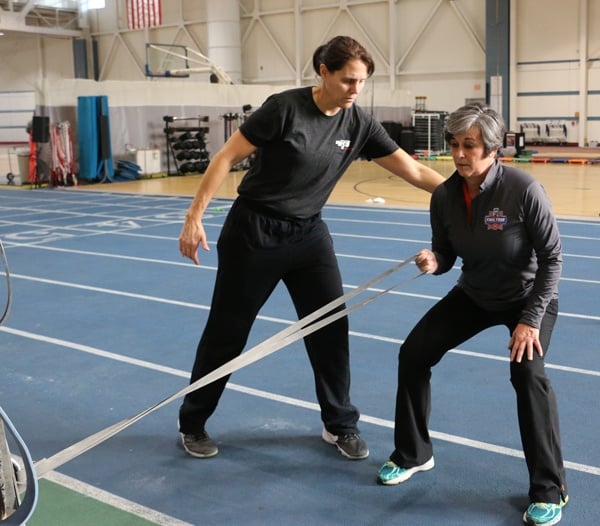 In an industry that is constantly evolving, the world of fitness is never boring. As a fitness professional, I get a lot of questions about what I do and why I do it. Each question, although relatively complex, has a simple answer.
In an industry that is constantly evolving, the world of fitness is never boring. As a fitness professional, I get a lot of questions about what I do and why I do it. Each question, although relatively complex, has a simple answer. With busy class schedules, homework, exams to study for and papers to write, not to mention wanting to have something of a social life, trying to stay fit in college can really be a challenge. On top of this, many students hold some form of a job where they work between 10 and 25 hours on any given week. Whether you are an undergrad or graduate student, the same thing applies. When all this stuff is on your plate and the schedule continues to fill up, one of the first things that tends to get pushed to the side is getting to the gym!
With busy class schedules, homework, exams to study for and papers to write, not to mention wanting to have something of a social life, trying to stay fit in college can really be a challenge. On top of this, many students hold some form of a job where they work between 10 and 25 hours on any given week. Whether you are an undergrad or graduate student, the same thing applies. When all this stuff is on your plate and the schedule continues to fill up, one of the first things that tends to get pushed to the side is getting to the gym!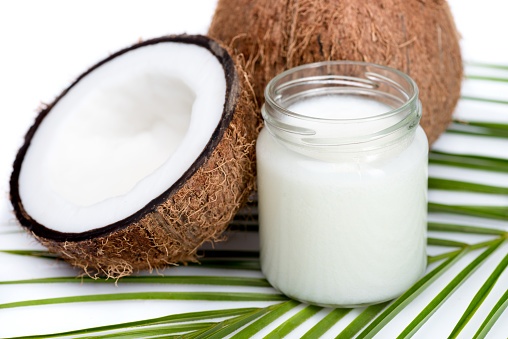 Coconut oil definitely seemed like the food craze a few years ago. A popular choice in
Coconut oil definitely seemed like the food craze a few years ago. A popular choice in  One of my favorite things to do during summer in Indiana is to visit the various farmers’ markets around the Indianapolis area. As a dietitian I am a sucker for the fresh fruits and veggies, but I also love the homemade desserts, candles, pasta, kettle corn, fresh flowers, and other wonderful items you can find.
One of my favorite things to do during summer in Indiana is to visit the various farmers’ markets around the Indianapolis area. As a dietitian I am a sucker for the fresh fruits and veggies, but I also love the homemade desserts, candles, pasta, kettle corn, fresh flowers, and other wonderful items you can find.
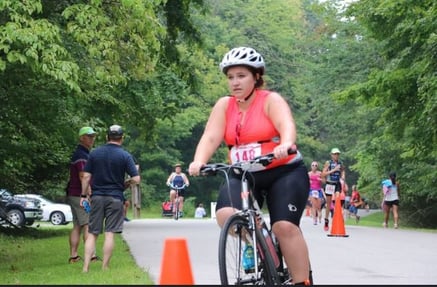 Who would you recommend this training program for?
Who would you recommend this training program for?